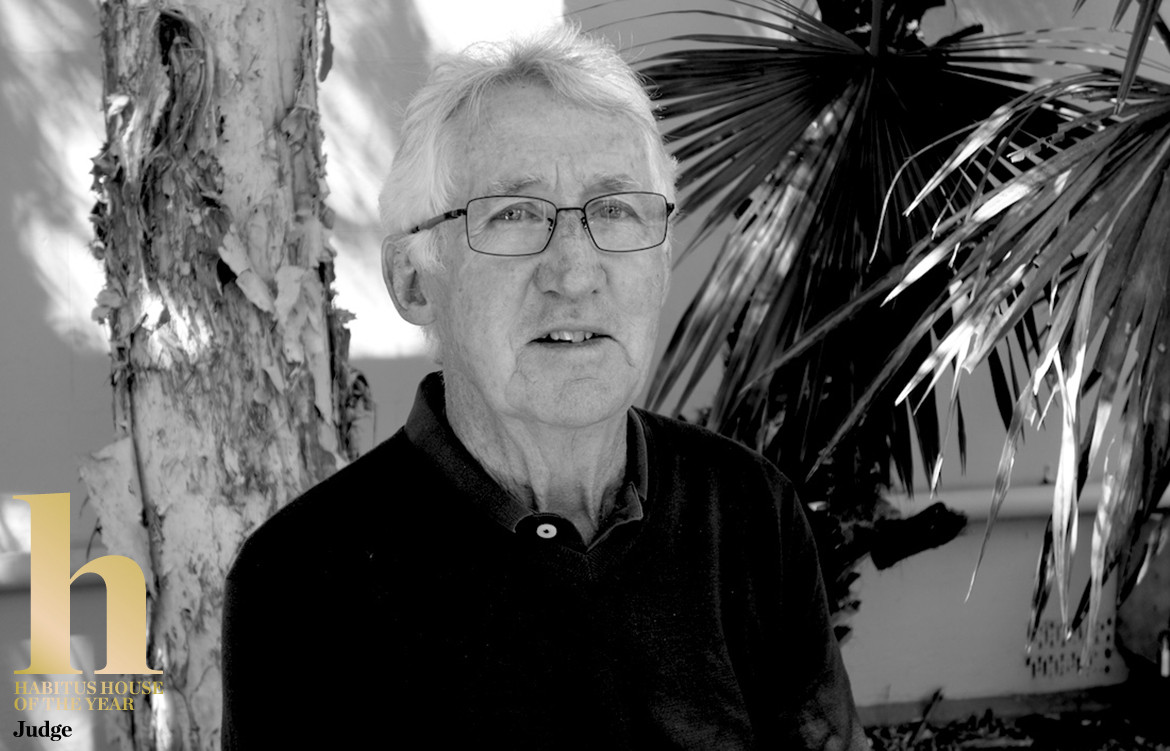To speak with Neil Burley is to discover a treasure trove of oral history about the who’s who of modern Australian design and architecture. Speaking with a passion and eloquence burnished over years of diverse creative practice, Neil is full of vivid anecdotes about some of the most seminal figures in Australian art and design history. From Harry Seidler to Marc Newson, Glenn Murcutt to James Bradley, Robert Klippel to Tina Engelen, he speaks of his contemporaries with fondness and respect that belies the far-reaching influence he himself has had.
The founder of architecture and interiors practice Burley Katon Halliday and furniture store Anibou, Neil has for decades been a stalwart of the national design scene. In 1961, he commenced his architecture studies at the University of NSW, where a communications tutor, Michael Nicholson, introduced him to what would bloom into the first phase of his career: graphic design. After 5 years of full and part time study he dropped out to work for the now-defunct Clune Galleries in Macleay Street, Potts Point – later to become Sydney’s iconic Yellow House.
Out of university, Neil’s graphic design business flourished and he established Neil Burley Design, expanding his practice to include interior and product design. “It felt like a natural transition,” he explains, “There’s a very strong relationship between some elements of any type of design. Graphic design may just be two dimensional, but good layout is very much like rational planning in architecture. There are many strong similarities between all those disciplines.”
A design polyglot in the truest sense, Neil continued to work across the three disciplines and grow Neil Burley Design significantly, eventually taking on partners David Katon and Ian Halliday and renaming the business Burley Katon Halliday in 1989. He remained with the practice until 1995, when he left to pursue another love: furniture. “By that time I had already started Anibou, and that was beginning to demand quite a lot of my time,” says Neil by way of explaining the shift in focus away from interiors, “So I simply went there and continued.”
Originally conceived as a distributor of European bentwood, Artek and other Finnish products, Anibou quickly evolved into a showcase for both international and Australian designers. “It was always obvious to me that local designers were being ignored,” says Neil. In response, Anibou provided a platform for emerging and established local designers including Tomek Archer, Frank Bauer, and Caroline Casey. Although in 2015 a group of former staff led by MD Philip Burrows took control of the business, it remains faithful to the original vision and continues to stock iconic Scandinavian and European brands. In July this year it added the 60s classic Swiss modular storage and furniture system, USM.
Throughout his long career, Neil’s practice has consistently been underpinned by two distinct passions: one for nurturing the local design scene and the other for design that prizes quality, craftsmanship, and meticulous attention to detail. “When something is well designed,” he says, “You can see with just one look that it’s going to be good, efficient, logical… that it’s more than just the mannerisms of the day.” A strong advocate for pragmatic design that prioritises practicality over trends, Neil underscores the importance of careful planning across all the creative disciplines, from furniture and products to architecture and interior design.
It is this pragmatism – in addition to his extensive expertise in design and interiors – that Neil brings to the table as a judge of this year’s inaugural Habitus House of the Year program. “I strongly believe that things have to work before they can do anything else: they have to satisfy the brief,” Neil says, “I also hope that all buildings are well built, and that inevitably involves craftsmanship.” Craftsmanship, a high level of finished quality, and a sensitive response to the client brief all rank high on the list of things Neil will be looking for in a winner, in addition to some point of distinction – in design, concept, or execution – that clearly separates the winning project from other homes.
And at the top of his wish list when searching for the winning project? “The two most important things to me are planning and whether something is climatically suitable,” he says, noting the particular importance of climate- and landscape-sensitive design in the Indo-Pacific region, where outdoor living is de rigeur, “Planning isn’t just in the abstract. Planning needs to relate to the sun and landscape and the site on which [the house] sits. Overall, I’m much more interested in ‘does the thing work?’ than ‘is it flash?’” Bringing together twenty-five of the best residential projects within our region from the past twelve months, the Habitus House of the Year shortlist is sure to give him more than ample options from which to choose.
View the full shortlist of projects in issue 41 of Habitus, available for pre-ordering today. For more about Habitus House of the Year, subscribe to our newsletter or read more here.
We would like to extend a special thanks to our Major Sponsors for their support in the inaugural year of the Habitus House of the Year initiative. Thank you to StylecraftHOME, Sub-Zero Wolf and ZIP Water.

